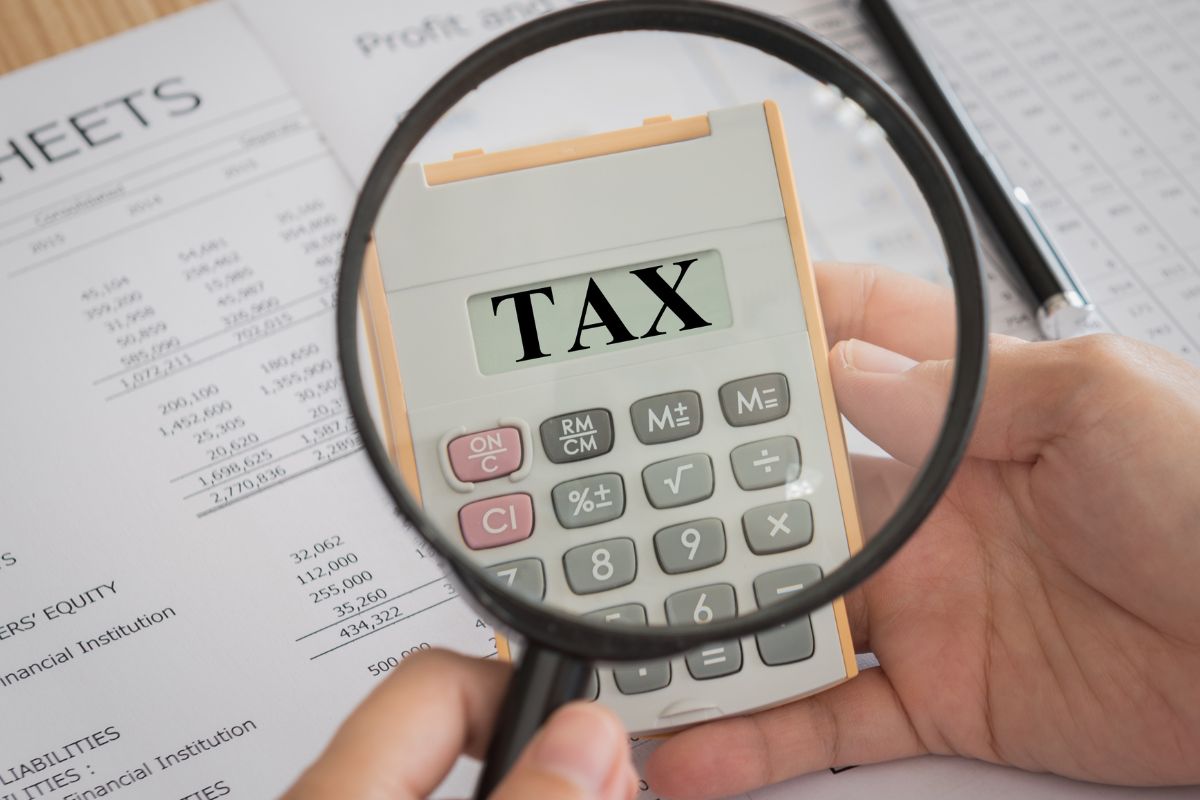Direct taxation is one of the most critical areas in the Indian taxation system. For professionals preparing for interviews in top CA firms, corporate tax departments, or government roles, having a strong grasp on direct tax concepts is essential. This article presents 50 detailed direct tax interview questions along with sample answers to help you prepare thoroughly and confidently.
Introduction
In the world of finance and taxation, direct tax plays a pivotal role in shaping the economic policies of a nation. It involves levying taxes directly on individuals’ or corporate incomes and assets. Understanding the nuances of direct taxation is important not only for compliance but also for strategic financial planning.
Interviews in the field of taxation often focus on both theoretical concepts and practical case studies. Employers look for candidates who not only understand the law but can also apply these principles to real-world scenarios. This article provides a detailed discussion on 50 essential direct tax interview questions, complete with sample answers to guide your preparation.
Section 1: Basic Concepts and Definitions
1. What is Direct Taxation?
Answer:
Direct taxation refers to taxes levied directly on the income or wealth of individuals, companies, or institutions. Examples include Income Tax, Corporate Tax, and Property Tax. In India, the Income Tax Act governs direct taxation, ensuring that taxpayers contribute to public revenue in a progressive manner.
2. Define Taxation.
Answer:
Taxation is the financial charge imposed by the government on individuals, businesses, and other entities to fund public services, infrastructure, and social welfare programmes. Taxes play a key role in redistributing wealth and stimulating economic growth.
3. What are the different types of direct taxes in India?
Answer:
The primary types of direct taxes include:
- Income Tax: Levied on individual and corporate incomes.
- Corporate Tax: Tax on the profits earned by companies.
- Capital Gains Tax: Tax on profits from the sale of capital assets such as property or securities.
- Wealth Tax: Although abolished in recent years, it was once levied on the net wealth of individuals.
- Property Tax: Imposed by local governments on real estate holdings.
4. Explain the difference between Direct and Indirect Taxes.
Answer:
- Direct Taxes: Imposed directly on the income or wealth of the taxpayer. They cannot be passed on to another entity. For example, Income Tax is paid by the individual earning the income.
- Indirect Taxes: Levied on goods and services and are generally included in the price paid by consumers. Goods and Services Tax (GST) is an example, where the seller collects the tax but the final burden is on the consumer.
5. What are the heads of income under the Income Tax Act?
Answer:
The Income Tax Act classifies income under five heads:
- Income from Salary: Wages, pensions, and perquisites.
- Income from House Property: Rental income after allowable deductions.
- Profits and Gains of Business or Profession: Income generated through business or professional activities.
- Capital Gains: Profits made from the sale of capital assets.
- Income from Other Sources: Residual income such as dividends, interest, and winnings.
Section 2: Detailed Technical Questions
6. How is residential status determined under the Income Tax Act?
Answer:
Residential status is determined based on the number of days an individual is physically present in India during the financial year. The categories are:
- Resident: If an individual is in India for 182 days or more during the financial year, or 60 days in the current year and 365 days over the preceding four years.
- Non-Resident (NR): If these criteria are not met.
- Resident but Not Ordinarily Resident (RNOR): Applies to certain expatriates or returning NRIs meeting specific conditions. Residential status is critical as it influences the taxability of global income.
7. What is Tax Deducted at Source (TDS), and how does it work?
Answer:
TDS is a mechanism where tax is deducted by the payer at the time of making a payment, and then deposited with the government on behalf of the recipient. For example, when employers pay salaries, they deduct TDS as per applicable income tax slabs. The deducted amount is later adjusted against the total tax liability of the employee. Employers must file quarterly TDS returns and provide certificates (Form 16/16A) to employees and other deductees.
8. How do you respond to an Income Tax Notice under Section 143(1)?
Answer:
When a taxpayer receives a notice under Section 143(1) for discrepancies between the filed return and Form 26AS, the following steps should be taken:
- Verify Discrepancies: Cross-check income figures, TDS details, and any other data against Form 26AS and the Annual Information Statement (AIS).
- Rectify Errors: If any omission or error is found (e.g., unreported income), prepare a revised return under Section 139(5).
- File Response: Log in to the Income Tax e-Filing portal, select the notice under Compliance, and attach relevant supporting documents.
- Monitor Outcome: Track the response and be prepared for further scrutiny if required.
9. Describe the concept of ‘Deemed to be Let Out’ property.
Answer:
‘Deemed to be Let Out’ (DTLO) property applies when an individual owns more than two residential properties. In such cases, only one property may be treated as self-occupied; the others are treated as let out even if they are not actually rented out. The notional rental income is computed as the higher of the fair rent or the municipal value, after deducting municipal taxes and a standard deduction of 30% for repairs and maintenance. This ensures that owners are taxed on potential rental income.
10. What are the key differences between Short-Term Capital Gains (STCG) and Long-Term Capital Gains (LTCG)?
Answer:
- Short-Term Capital Gains (STCG):
- Arise from the sale of assets held for a shorter duration (less than 12 months for equities and less than 36 months for immovable property).
- Tax rates for STCG can be as high as the individual’s applicable income tax slab, or 15% for listed equities.
- Long-Term Capital Gains (LTCG):
- Occur from the sale of assets held beyond the stipulated holding period (12 months for equities and 36 months for other assets).
- Taxed at lower rates (10% on gains exceeding ₹1 lakh for equities without the benefit of indexation, or 20% with indexation for other assets).
Section 3: In-depth Interview Questions on Compliance and Amendments
11. What steps should a company take if it fails to deduct TDS on professional fees?
Answer:
If a company fails to deduct TDS on professional fees, it may lead to disallowance of the expense under Section 40(a)(ia). The corrective measures include:
- Immediate Rectification: Deduct TDS of the applicable rate and deposit it with interest as per Section 201(1A).
- Filing TDS Returns: File the missed TDS return for the relevant quarter and issue Form 16A to the consultant.
- Claiming Expense: Once TDS is deposited and documented in the subsequent financial year, the disallowed expense can be claimed as a deduction.
12. Explain the impact of depreciation on taxable income.
Answer:
Depreciation allows businesses to write off the cost of assets over their useful lives. By claiming depreciation, companies reduce their taxable income because the depreciation expense is deducted from their gross income. This not only lowers the tax liability but also reflects the actual wear and tear of assets. Different depreciation methods (such as straight-line or written down value) can have varied impacts on financial statements and tax calculations.
13. What is the importance of a Tax Audit Report?
Answer:
A Tax Audit Report is crucial for verifying the accuracy and completeness of a company’s financial records and tax returns. It ensures that all deductions, expenses, and income are reported as per the statutory provisions. Key aspects include:
- Compliance Check: Verifies adherence to the Income Tax Act and related rules.
- Error Detection: Identifies discrepancies or errors in reporting.
- Supporting Documentation: Provides evidence for deductions and expenses claimed.
- Penalty Avoidance: Helps in mitigating the risk of penalties and further scrutiny by tax authorities.
14. Discuss the amendments introduced in recent corporate budgets that affect direct taxes.
Answer:
Recent budgets have often introduced changes to make the corporate tax regime more competitive. Some common amendments include:
- Reduction in Corporate Tax Rates: Lower tax rates for new domestic manufacturing companies.
- Tax Incentives: Introduction of tax holidays or additional depreciation benefits to promote capital investments.
- Simplification of Compliance: Streamlining the filing process and reducing compliance burdens.
- Changes in Tax Base: Adjustments in disallowable expenses and revision of provisions for business profits.
These amendments aim to improve ease of doing business and attract investment.
15. How does the ‘Vivid se Vishwas Scheme’ help in resolving tax disputes?
Answer:
The ‘Vivid se Vishwas Scheme’ was designed to address long-standing tax disputes by allowing taxpayers to settle outstanding liabilities without incurring penalties or interest. Key benefits include:
- Reduced Litigation: Taxpayers can avoid protracted legal battles with tax authorities.
- Cost Savings: By paying only the principal tax, companies and individuals reduce the financial burden.
- Compliance Incentive: Encourages timely settlement of disputes, thereby streamlining the tax administration process.
16. What is the role of Advance Tax Payments?
Answer:
Advance Tax Payments involve the payment of tax in instalments throughout the financial year, based on estimated income. This system is designed to:
- Ease the Tax Burden: Prevent a large, lump-sum tax payment at the end of the year.
- Ensure Regular Revenue Flow: Help the government maintain a steady flow of revenue.
- Avoid Penalties: Timely payments help in avoiding interest and penalties for underpayment.
17. Define Transfer Pricing and its relevance in multinational transactions.
Answer:
Transfer Pricing refers to the pricing of goods, services, or intangibles between related entities within a multinational enterprise. It is crucial because:
- Fair Pricing: Ensures transactions are conducted at arm’s length.
- Prevents Profit Shifting: Discourages manipulation of prices to avoid tax liabilities.
- Compliance Requirement: Detailed documentation is required under Sections 92 to 92F to prevent tax evasion.
18. What is Minimum Alternate Tax (MAT) and who does it affect?
Answer:
MAT is designed to ensure that companies with significant book profits but low taxable income (due to various exemptions and deductions) pay a minimum amount of tax. It is calculated at 15% of the book profits, along with applicable surcharge and cess. Companies can carry forward MAT credits for up to 15 assessment years to offset future tax liabilities.
19. How do you calculate income from House Property, particularly for self-occupied and let-out properties?
Answer:
- Self-Occupied Property:
- No rental income is considered. However, a notional rent (often nil) is computed.
- Interest on home loans can be claimed as a deduction.
- Let-Out Property:
- Rental income is the higher of the actual rent received or the municipal value (subject to a fair rent ceiling).
- From this, municipal taxes and a standard deduction (30% for repairs and maintenance) are deducted to arrive at the net income.
20. What are Tax Deductions available under Section 80C?
Answer:
Section 80C provides individuals with a deduction of up to ₹1.5 lakh on investments and expenses such as:
- Life Insurance Premiums
- Employee Provident Fund (EPF) contributions
- Public Provident Fund (PPF) investments
- National Savings Certificate (NSC)
- Equity-Linked Savings Schemes (ELSS)
- Principal repayment on home loans
- Tuition fees for children (subject to limits).
Section 4: Advanced Topics and Special Cases
21. What are Tax Credits and how do they differ from Tax Deductions?
Answer:
- Tax Deductions: Reduce the total taxable income.
- Tax Credits: Directly reduce the tax liability.
For example, if you have a tax credit of ₹10,000, your tax payable is reduced by that amount, irrespective of your tax bracket.
22. Explain the process of filing an Income Tax Return (ITR).
Answer:
The process involves:
- Selection of the Appropriate Form: For example, ITR-1 for salaried individuals and ITR-3 for professionals/business income.
- Calculation of Income: Sum up income from various heads and apply deductions.
- Payment of Tax: Settle any balance tax payable.
- Submission: File the return online via the Income Tax e-Filing portal.
- Verification: Complete the process with e-verification or by sending a signed physical copy to the CPC office.
23. What is the significance of a Tax Residency Certificate?
Answer:
A Tax Residency Certificate (TRC) is issued by the government to certify an individual’s or entity’s tax residence in a particular country. It is essential for:
- Claiming Tax Treaty Benefits: Avoiding double taxation on income earned abroad.
- Establishing Tax Obligations: Proving residency for determining global income tax liability.
24. Can you explain the concept of ‘Tax Planning’ versus ‘Tax Compliance’?
Answer:
- Tax Planning: Involves organising one’s financial affairs to legally minimise tax liabilities using available deductions, exemptions, and incentives.
- Tax Compliance: Entails following statutory rules and regulations, including timely and accurate filing of returns and payment of taxes.
Both are crucial – effective tax planning can reduce liabilities, while tax compliance avoids penalties and legal issues.
25. What do you understand by the term ‘Financial Year’ in the context of taxation?
Answer:
The financial year in India runs from 1st April to 31st March. It is the period used to prepare financial statements and calculate taxable income for that year. The following year, known as the assessment year, is when the income earned in the financial year is assessed for taxation.
26. Explain the concept of ‘Previous Year’ and ‘Assessment Year’.
Answer:
- Previous Year (FY): The financial year during which the income is earned.
- Assessment Year (AY): The subsequent year in which the income earned in the previous year is assessed and taxed.
This distinction helps in organising tax submissions and computations clearly.
27. What is the effect of Depreciation on a company’s taxable income?
Answer:
Depreciation reduces taxable income by allowing businesses to allocate the cost of an asset over its useful life. This not only reflects the reduction in asset value but also helps in lowering the overall tax liability by reducing profit before tax.
28. What is a ‘Tax Audit’ and why is it important?
Answer:
A Tax Audit is an independent review of a company’s financial records to ensure that all tax-related information is accurate and compliant with the Income Tax Act. Its importance lies in:
- Verifying Accuracy: Confirming that all deductions and incomes are correctly reported.
- Preventing Fraud: Detecting discrepancies that might indicate tax evasion.
- Ensuring Compliance: Helping the business avoid penalties and additional scrutiny from tax authorities.
29. Describe the role of a ‘Tax Auditor’ during a tax audit.
Answer:
A tax auditor examines financial records, verifies claims for deductions, and ensures that the company’s accounts are in conformity with the prescribed tax laws. The auditor’s report is critical in substantiating the accuracy of the tax returns filed.
30. What is the significance of the ‘Annual Information Statement (AIS)’?
Answer:
The AIS is a detailed statement of all the financial transactions and information collected by the tax authorities during a financial year. It helps in cross-verifying the income reported by taxpayers, ensuring transparency and accuracy in tax reporting.
Section 5: Specialised Topics and Emerging Trends
31. What is the Double Taxation Avoidance Agreement (DTAA)?
Answer:
DTAA is an agreement between two or more countries to prevent the same income from being taxed twice. This helps in:
- Avoiding Double Taxation: Ensuring that taxpayers do not pay tax on the same income in two different countries.
- Facilitating International Trade: Promoting cross-border investments by providing tax relief.
32. Explain the concept of ‘Minimum Alternate Tax (MAT)’.
Answer:
MAT is imposed on companies to ensure that they pay a minimum amount of tax even if they have significant deductions and exemptions. It is calculated at 15% of the book profits, along with applicable surcharge and cess, and companies can carry forward MAT credits for future years.
33. What are the implications of Tax Evasion compared to Tax Avoidance?
Answer:
- Tax Avoidance: Involves legal methods to reduce tax liabilities through planning and investment, adhering to the law.
- Tax Evasion: Entails illegal practices like underreporting income or inflating deductions to avoid paying taxes, which can lead to penalties and prosecution.
34. What is a ‘Superannuation Fund’ and how is it treated for tax purposes?
Answer:
A Superannuation Fund is a retirement benefit scheme where both employers and employees contribute towards the employee’s future. For tax purposes, contributions may be tax-deductible, and the fund’s growth can be tax-deferred until withdrawal, at which point withdrawals may be taxed as per the applicable provisions.
35. Explain the term ‘Excise Duty’ and its relation to direct taxation.
Answer:
Although Excise Duty is an indirect tax, understanding it is crucial for comprehensive tax knowledge. It is levied on the manufacture or production of goods within the country. The awareness of excise duty complements the broader understanding of the tax structure, even if direct taxes focus primarily on income and wealth.
36. What is the role of Advance Tax in personal and corporate taxation?
Answer:
Advance Tax involves paying the estimated tax liability in instalments during the financial year. This mechanism ensures:
- Cash Flow Management: Avoiding a large tax bill at the end of the year.
- Regular Revenue for Government: Maintaining a steady inflow of funds throughout the year.
- Penalty Avoidance: Timely payments help avoid interest on delayed payments.
37. How are Tax Refunds processed?
Answer:
If a taxpayer pays more tax than required, the excess amount is refunded by the Income Tax Department. The refund is processed once the tax return is verified and any discrepancies are resolved. Refunds can be credited directly to the taxpayer’s bank account.
38. What do you understand by ‘Amortisation’ in the context of direct taxation?
Answer:
Amortisation refers to the systematic allocation of the cost of an intangible asset or capital expenditure over its useful life. This process helps in reducing the taxable income, as the amortised amount is considered an allowable expense.
39. What is the ‘Previous Year’ concept in taxation?
Answer:
The term ‘Previous Year’ refers to the financial year in which income is earned. This is distinct from the assessment year, where the income of the previous year is evaluated and taxed. Understanding this distinction is vital for accurate tax calculations.
40. Can you explain the concept of ‘Tax Nexus’?
Answer:
Tax nexus refers to the sufficient connection between a taxpayer and a taxing jurisdiction. This connection determines the extent of tax liability. Factors such as physical presence, economic activity, and revenue generation contribute to establishing tax nexus.
Section 6: Practical Scenarios and Case Studies
41. How would you handle a discrepancy between the income reported in your ITR and the details in Form 26AS?
Answer:
To resolve such discrepancies, you should:
- Verify Details: Cross-check the income figures reported in your ITR against Form 26AS and any available TDS certificates.
- Identify Errors: Determine if the discrepancy is due to omitted income, incorrect TDS credit mapping, or reporting mistakes.
- Rectify if Necessary: If an error is found, file a revised return under Section 139(5) and pay any additional tax liability.
- Respond to Notices: Provide supporting documents if the tax authorities issue a notice for further clarification.
42. How do you address non-compliance in TDS deduction for salary payments?
Answer:
If non-compliance in TDS deduction is identified, the remedial steps include:
- Immediate Action: Deduct and deposit the outstanding TDS with the government along with applicable interest under Section 201(1A).
- Filing Corrections: File an amended TDS return for the relevant quarter.
- Documentation: Issue revised TDS certificates (Form 16) to the affected employees to maintain transparency.
43. What steps should be taken when a tax audit reveals discrepancies in the financial statements?
Answer:
Upon identifying discrepancies during a tax audit, the following steps are recommended:
- Review and Reconcile: Conduct a thorough review of the accounts to identify the source of discrepancies.
- Prepare Explanatory Notes: Document the findings and provide explanations for each discrepancy.
- Submit Revised Documents: If necessary, file a revised return or submit additional documentation to support your claims.
- Implement Controls: Introduce internal controls to avoid future discrepancies.
44. How should a professional approach the question, “Have you ever filed a TDS or TCS return?” in an interview?
Answer:
A sample response could be:
“I have experience in filing TDS returns for salary and contractor payments. I understand the importance of timely filing, issuing TDS certificates, and reconciling the details with Form 26AS. I ensure that all deductions are made as per the prevailing laws and that any discrepancies are promptly addressed through the appropriate channels.”
45. What is your understanding of ‘Qualified Retirement Plans’ in the context of taxation?
Answer:
Qualified Retirement Plans are designed to provide tax benefits to employees by allowing them to invest in pension schemes where contributions are tax-deductible. These plans offer tax-deferred growth on investments and sometimes provide tax-free withdrawals upon retirement, subject to specified conditions.
46. How would you explain the concept of ‘Marginal Tax Rate’?
Answer:
The marginal tax rate is the rate at which the last rupee of taxable income is taxed. It represents the additional tax payable on an incremental unit of income and plays an important role in decision-making regarding investments and income planning.
47. What are some common allowances that are fully taxable?
Answer:
Certain allowances provided by employers are fully taxable. These include:
- Performance Bonuses: Usually fully taxable in the year received.
- Perquisites: Such as company cars, housing allowances (when not exempted), and other non-monetary benefits.
- Other Benefits: Any benefits provided that do not fall under exempt categories as per the Income Tax Act.
48. How would you approach a question on amendments in recent budgets affecting direct tax policies?
Answer:
When answering such a question, it is important to highlight key amendments such as:
- Changes in corporate tax rates for new manufacturing companies.
- Introduction of additional depreciation benefits to boost capital investment.
- Revisions in disallowable expenses for business income.
- Streamlining of compliance procedures to simplify tax filing.
This demonstrates that you are aware of current trends and policy changes in the taxation landscape.
49. What are the key features of the New Pension Scheme (NPS) and its benefits for non-government employees?
Answer:
The New Pension Scheme (NPS) is a government-initiated retirement savings scheme that offers:
- Tax Benefits: Contributions are eligible for deductions under Section 80CCD(1B) in addition to Section 80C.
- Long-Term Savings: Provides a sustainable pension post-retirement.
- Flexibility: Allows both government and non-government employees to invest in a diversified portfolio with a mix of equity, corporate bonds, and government securities.
- Attractive Returns: While subject to market fluctuations, the scheme is designed to deliver competitive long-term returns.
50. Does an NRI need to pay property tax if they own assets in India?
Answer:
Yes, an NRI is required to pay property tax on any real estate owned in India, similar to Indian residents. The property tax is typically computed based on the annual rental income or the assessed market value of the property, as determined by local municipal authorities.
Last Minute Tips
Preparing for direct tax interviews requires a blend of theoretical knowledge and practical understanding of real-life scenarios. The 50 questions presented in this article cover a wide range of topics—from basic definitions and income heads to complex issues like transfer pricing and budget amendments. With detailed answers provided for each question, candidates can build confidence and clarity in their responses.
The interview process in the field of taxation is designed to assess not only your familiarity with the Income Tax Act and related regulations but also your ability to apply this knowledge in resolving disputes, handling compliance, and planning strategically. Whether you are a fresher or a seasoned professional, mastering these 50 direct tax interview questions will help you demonstrate both technical expertise and practical acumen.
Remember that tax laws and regulations evolve regularly, so it is important to stay updated on the latest amendments and policy changes. Regular practice, review of past case studies, and real-world application of these principles will significantly enhance your readiness for any taxation interview.
We hope this comprehensive guide serves as a valuable resource for your interview preparation and helps you secure your desired role in the dynamic field of direct taxation. Good luck with your interview!
Calling all CA dreamers!
🔴 Are you tired of searching for the perfect articelship or job?
Well, fear no more! With 10K+ students and professionals already on board, you don't want to be left behind. Be a part of the biggest community around! Join the most reliable and fastest-growing community out there! ❤️
And guess what? It’s FREE 🤑
✅ Join our WhatsApp Group (Click Here) and Telegram Channel (Click Here) today for instant updates.




